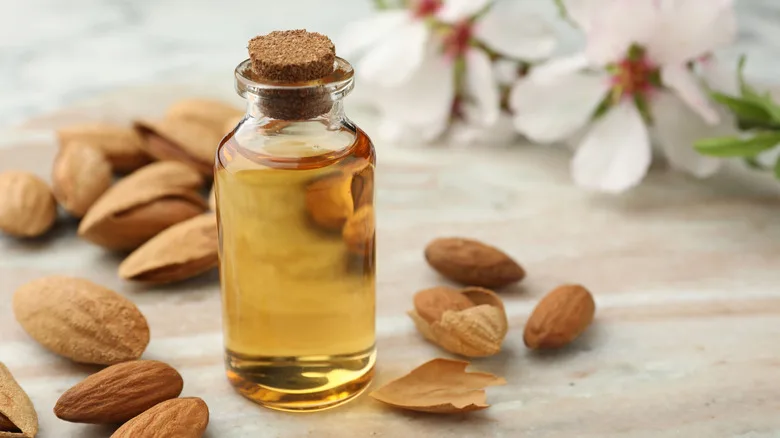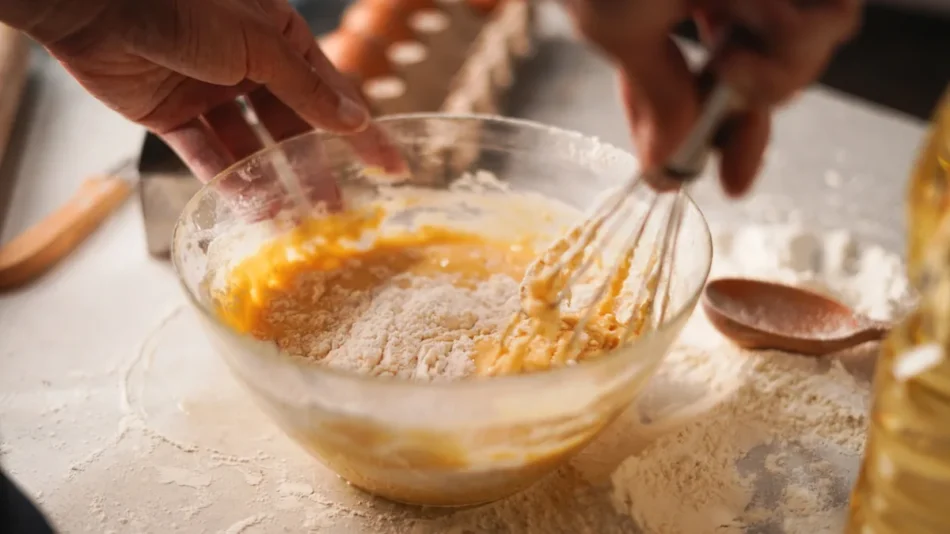Just like a painter coats a wall with white paint before layering another color on top, bakers reach for the extract. Just a few drops of bottled extract’s strong, concentrated flavor can lay down major dimensionality for any batter — especially when that extract happens to be almond-flavored. Today’s pro tip comes from cookbook author and baking instructor Erin Jeanne McDowell, who sat down with Tasting Table to share her go-to uses for the versatile, powerhouse ingredient. “Extracts are potent in both aroma and flavor and can add depth to some recipes. Think of it like layers of flavor,” McDowell shares. “I like to use almond extract when I’m trying to boost the creamy notes of a recipe, like frostings or buttercreams.” We also use it in our lemon almond bread and our blueberry almond Chantilly cake.
The ingredient is a combination of highly-concentrated bitter almond oil, alcohol, and water, yielding a more distinctive taste than vanilla extract. Recipes typically require less than a teaspoon. On the palate, marzipan-y almond extract resembles amaretto liqueur — no mystery considering almonds belong to the same stone fruit family as apricots (amaretto is made from apricot kernels). “I also love the way it pairs with stone fruit, so I often add a dash of almond extract to cherry or peach recipes, like pie fillings,” McDowell continues. “It also can amplify the toasty, nutty flavors in any kind of nut in a recipe, even if it’s using a different nut than almond.”
Read more: 11 Once-Popular Desserts That No One Eats Anymore
Almond extract emphasizes creamy tones and nutty flavors

Glass jar of almond extract with whole almond nuts – New Africa/Shutterstock
From pancake batter to cutout cookies, almond extract takes all things sweet to dimensional new depths. Just keep in mind, says McDowell, that if you’re crafting a dessert with more delicate tasting notes (such as rosewater or orange blossom), bold almond extract might be overpoweringly strong and mask those subtler flavors. Here at Tasting Table, we’re using almond extract to upgrade store-bought frosting and elevate homemade whipped cream. If a recipe doesn’t call for almond extract, says McDowell, “I would typically start with a very small amount (about 1/4 teaspoon). You can always add a dash more, but it’s a strong flavor and you can’t take it away once you add it!”
Happily, since a little almond extract goes such a long way, adding a bottle to your home-baking arsenal is a low cost investment. At a Walmart in Chicago, a two-ounce bottle of McCormick brand almond extract runs for $4.82. Store it in a cool, dry place away from direct sunlight (the spice cabinet works perfectly). Almond extract doesn’t spoil, but for the best flavor, use the bottle up within a year. If you’ve just recovered a half-full bottle lost to the back of your cabinet, don’t despair. It’s likely still fine to use. But, over time, the ingredient can lose its almond-y potency or start to take on a more pronounced astringent alcohol profile. Give older bottles the sniff test before adding ’em to your baking batters.
Want more food knowledge? Sign up to our free newsletter where we’re helping thousands of foodies, like you, become culinary masters, one email at a time.
Read the original article on Tasting Table.







